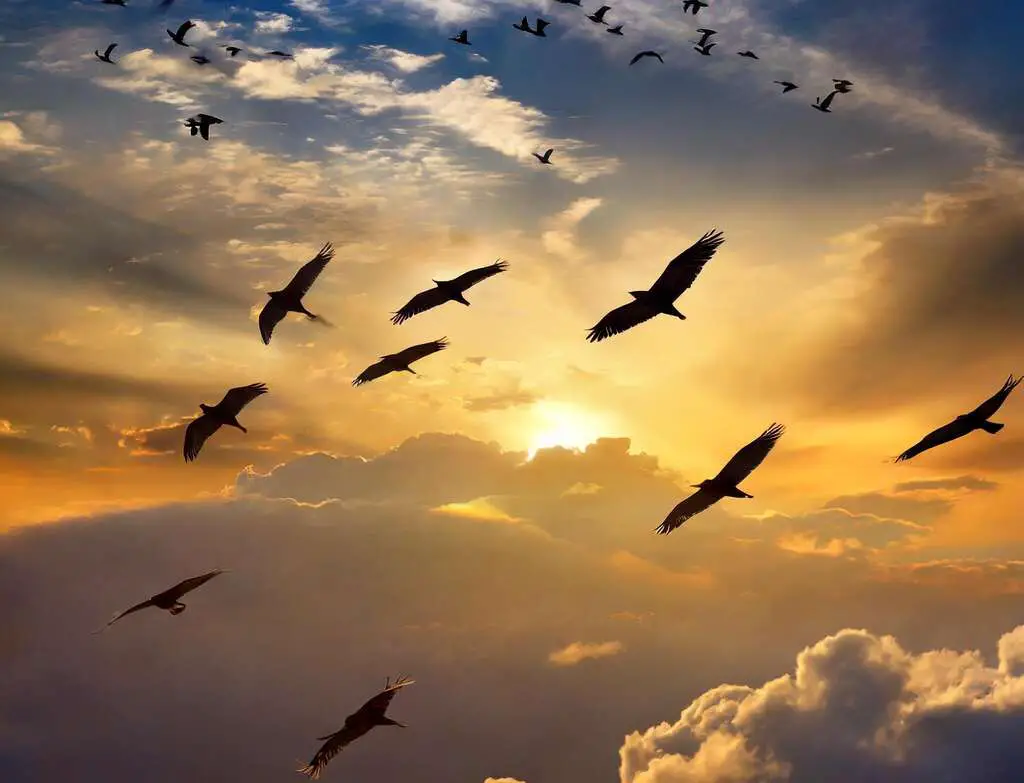Birdwatching, also known as birding, is a captivating hobby that allows nature enthusiasts to connect with the avian world. Whether you’re a seasoned birder or a curious newcomer, understanding the differences between observing birds during migration and non-migration periods can significantly enhance your birdwatching experience. In this comprehensive guide, we’ll explore the unique aspects of each season, the challenges and rewards they present, and how you can make the most of your birding adventures year-round.
Table of Contents
- 1 Understanding Bird Migration: Nature’s Grand Spectacle
- 2 Birdwatching During Migration: A Time of Excitement and Discovery
- 3 Birdwatching During Non-Migration: The Joys of Resident Birds
- 4 Comparing Migration and Non-Migration Birdwatching
- 5 Essential Skills for Both Migration and Non-Migration Birdwatching
- 6 Seasonal Strategies for Successful Birdwatching
- 7 Conservation and Ethical Birdwatching
- 8 Embracing Technology in Birdwatching
- 9 The Social Side of Birdwatching
- 10 Conclusion: The Year-Round Joy of Birdwatching
- 11 Author
Understanding Bird Migration: Nature’s Grand Spectacle
What is Bird Migration?
Bird migration is one of nature’s most awe-inspiring phenomena. It’s a seasonal movement of birds between breeding and wintering grounds, often covering vast distances. This incredible journey is driven by various factors, including changes in daylight, temperature, and food availability.
Why Do Birds Migrate?
Birds embark on these perilous journeys for several reasons:
- Food availability: As seasons change, so does the abundance of food sources in different regions.
- Breeding opportunities: Many species travel to specific areas that offer ideal conditions for nesting and raising young.
- Climate adaptation: Birds move to avoid harsh weather conditions that could threaten their survival.
When Does Migration Occur?
While migration patterns vary among species, there are generally two main migration periods:
- Spring migration: Typically occurs from March to May, as birds move from their wintering grounds to breeding areas.
- Fall migration: Usually takes place from August to November, when birds return to their wintering grounds.
Birdwatching During Migration: A Time of Excitement and Discovery
The Thrill of the Chase
Observing birds during migration offers a unique and exhilarating experience for birdwatchers. Here’s why:
- Species diversity: Migration periods bring a wide variety of birds through different regions, including rare and uncommon species.
- Changing behaviors: Birds exhibit fascinating behaviors during migration, such as flocking and increased feeding activity.
- Seasonal plumage: Many birds sport their most vibrant breeding plumage during spring migration.
Key Locations for Migration Birdwatching
Some of the best spots to witness bird migration include:
- Coastal areas: Shorelines often serve as natural flyways for migrating birds.
- Wetlands and marshes: These habitats provide crucial stopover sites for many species.
- Mountain passes: Birds often funnel through these areas during their journeys.
- Urban parks: Even in cities, green spaces can attract a surprising variety of migrating birds.
Challenges of Migration Birdwatching
While exciting, birdwatching during migration comes with its own set of challenges:
- Unpredictability: Bird movements can be influenced by weather patterns, making it difficult to predict exact arrival times.
- Crowded hotspots: Popular birding locations may become congested during peak migration periods.
- Rapid identification: With so many species passing through, quick and accurate identification can be challenging.
Birdwatching During Non-Migration: The Joys of Resident Birds
Embracing the Familiar
Non-migration periods offer a different but equally rewarding birdwatching experience:
- Resident species: Focus on local birds that stay in the area year-round.
- Breeding behaviors: Observe courtship displays, nest-building, and parenting behaviors.
- Juvenile birds: Watch as young birds learn to fly and forage.
Advantages of Non-Migration Birdwatching
Birdwatching outside of migration seasons has several benefits:
- Predictability: Resident birds tend to have established territories and routines.
- Deeper observation: More time to study individual birds and their behaviors in detail.
- Less crowded: Birding locations are often quieter and less busy during non-migration periods.
Challenges of Non-Migration Birdwatching
Non-migration birdwatching isn’t without its difficulties:
- Fewer species: The variety of birds may be limited compared to migration periods.
- Seasonal changes: Some resident birds may alter their behaviors or appearance throughout the year.
- Weather extremes: Depending on your location, extreme weather conditions may affect birdwatching opportunities.
Comparing Migration and Non-Migration Birdwatching
To better understand the differences between birdwatching during migration and non-migration periods, let’s examine a comparative table:
| Aspect | Migration Birdwatching | Non-Migration Birdwatching |
|---|---|---|
| Species Diversity | High, with many transient species | Lower, focused on resident birds |
| Predictability | Less predictable due to weather and other factors | More predictable with established territories |
| Behavior Observation | Focused on migratory behaviors (e.g., flocking, increased feeding) | Opportunity to observe full life cycle behaviors |
| Plumage | Often vibrant breeding plumage during spring migration | Varies by season, including winter and eclipse plumages |
| Identification Challenge | Higher, with many unfamiliar species | Lower, with more familiar resident birds |
| Crowding at Popular Spots | Often more crowded during peak migration | Generally less crowded |
| Best Locations | Flyways, stopover sites, coastal areas | Local habitats, including backyards and parks |
| Seasonal Timing | Concentrated in spring and fall | Year-round opportunities |
| Equipment Needs | May require more specialized gear for varying conditions | Basic equipment often sufficient |
| Learning Curve | Steeper, with need to identify many species quickly | Gentler, allowing time to study familiar species in depth |
Essential Skills for Both Migration and Non-Migration Birdwatching
Honing Your Identification Abilities
Regardless of the season, strong identification skills are crucial for enjoyable birdwatching:
- Visual identification: Learn to recognize birds by their shape, size, coloration, and field marks.
- Auditory identification: Familiarize yourself with bird calls and songs.
- Behavior recognition: Observe how different species move, fly, and interact with their environment.
Mastering Your Equipment
Proper use of birdwatching equipment is essential year-round:
- Binoculars: Choose a pair that suits your needs and practice using them efficiently.
- Field guides: Whether in book form or as a mobile app, a good field guide is indispensable.
- Camera: If you enjoy bird photography, learn to capture clear images in various conditions.
Developing Patience and Observation Skills
Birdwatching requires patience and keen observation, regardless of the season:
- Stillness and silence: Practice remaining quiet and motionless to avoid disturbing birds.
- Attention to detail: Train your eyes and ears to pick up subtle cues in bird behavior and appearance.
- Persistence: Some of the most rewarding sightings come to those who wait.
Seasonal Strategies for Successful Birdwatching
Spring: The Dawn Chorus and Beyond
Spring offers unique opportunities for birdwatchers:
- Early morning outings: Take advantage of the dawn chorus when birds are most active.
- Breeding behavior watch: Observe courtship displays, nest-building, and territorial disputes.
- Warbler neck: Be prepared for the challenge of spotting small, active birds high in the tree canopy.
Summer: Nurturing the Next Generation
Summer birdwatching focuses on breeding success:
- Nesting sites: Carefully observe nesting behaviors without disturbing the birds.
- Fledgling watch: Look for young birds learning to fly and forage.
- Night birding: Take advantage of longer days to observe crepuscular and nocturnal species.
Fall: The Great Return Journey
Fall migration brings its own set of birdwatching opportunities:
- Hawk watches: Visit known raptor migration routes to witness impressive numbers of birds of prey.
- Shorebird spotting: Check coastal areas and wetlands for migrating sandpipers, plovers, and other shorebirds.
- Mixed flocks: Look for diverse groups of birds foraging together during migration stopovers.
Winter: Survival Strategies on Display
Winter birdwatching reveals the hardiness of resident and overwintering species:
- Feeder watch: Set up bird feeders to attract a variety of species to your backyard.
- Waterfowl concentration: Visit lakes and coastal areas to observe large gatherings of ducks, geese, and swans.
- Irruption year excitement: Keep an eye out for irruptive species that may venture south in search of food.
Conservation and Ethical Birdwatching
Supporting Bird Conservation Efforts
Responsible birdwatchers play a crucial role in conservation:
- Citizen science: Participate in bird counts and surveys to contribute valuable data.
- Habitat protection: Support organizations working to preserve important bird habitats.
- Sustainable practices: Reduce your environmental impact to help protect bird populations.
Practicing Ethical Birdwatching
Ethical considerations are important year-round:
- Respect for birds: Avoid disturbing nesting sites or causing unnecessary stress to birds.
- Habitat preservation: Stay on designated trails and avoid damaging sensitive environments.
- Responsible photography: Prioritize the well-being of birds over getting the perfect shot.
Embracing Technology in Birdwatching
Apps and Online Resources
Modern technology has revolutionized birdwatching:
- Identification apps: Use smartphone apps for quick and accurate bird identification.
- eBird: Contribute to this global database of bird observations and access valuable data.
- Online communities: Connect with fellow birders through forums and social media groups.
- BirdCast – Bird migration forecasts in real-time
Photography and Videography
Advances in camera technology have made bird photography more accessible:
- Digiscoping: Use your smartphone with a spotting scope for long-distance photography.
- High-speed video: Capture fascinating behaviors with slow-motion video capabilities.
- Image recognition: Utilize AI-powered apps to assist with identification from photos.
The Social Side of Birdwatching
Joining Birdwatching Groups
Connecting with other birders enhances the experience:
- Local Audubon chapters: Participate in guided walks and educational programs.
- Birding festivals: Attend events that celebrate bird migration and local species.
- Online forums: Share sightings and seek advice from experienced birders.
Mentoring and Education
Sharing your knowledge helps grow the birdwatching community:
- Youth programs: Introduce young people to the joys of birdwatching.
- Beginner workshops: Offer guidance to newcomers on equipment selection and basic skills.
- Conservation education: Spread awareness about the importance of bird conservation.
Conclusion: The Year-Round Joy of Birdwatching
Whether you’re marveling at the spectacle of migration or delving into the intricacies of resident bird behavior, birdwatching offers endless opportunities for learning and enjoyment. By understanding the differences between migration and non-migration periods, you can tailor your approach to make the most of each season.
Remember that every birdwatching outing, regardless of the time of year, has the potential for discovery and wonder. The key is to remain curious, patient, and respectful of the natural world. So grab your binoculars, head outdoors, and immerse yourself in the fascinating world of birds – you never know what amazing sights and sounds await you!





